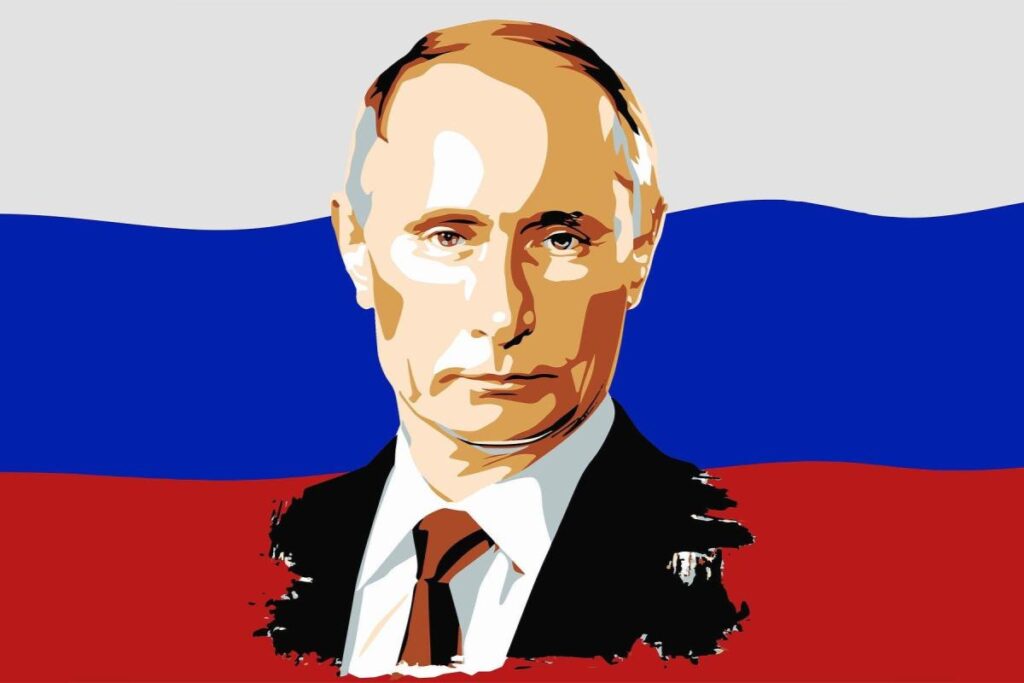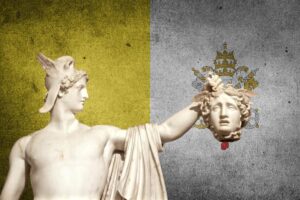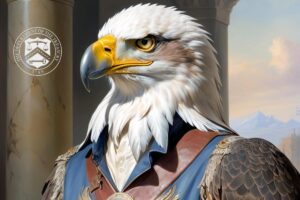In September 2003, a secret transaction took place. The location was Monaco, a tax haven associated with the international rich. Specifically, an exclusive block just beneath its lavish casino. An apartment changed hands. A local notary signed the deal. Purchase price: €3.6m (£3.1m). For this, the buyer got a luxury fourth-floor flat, two parking spaces, a storeroom, and the use of a pool in the Monte Carlo Star complex.
From the balcony the new owner could gaze down on Monaco’s sparkling marina, stuffed during the summer with floating superyachts. Security ensured residents were undisturbed by tourists milling around a mini-garden built on the complex’s roof. There were sounds, too, pleasant ones – the clatter of helicopters ferrying new arrivals from Nice airport, and the screeching of swifts.
The identity of the flat’s buyer was a mystery. The official “purchaser” was an offshore company listed in the British Virgin Islands (BVI), Brockville Development Ltd. Brockville was in turn owned by two further Panama-registered entities – Sefton Securities and, later, Radnor Investments SA. To outsiders, the arrangements looked a little like a Russian doll, with the ultimate beneficiary nestled under layers.
Thanks to documents in the Pandora papers, the Guardian can identify the flat’s buyer – a woman, 28 years old in 2003, and at the time unknown. Name: Svetlana Krivonogikh. In the space of a few years, around the turn of the millennium, Krivonogikh became extremely wealthy. She acquired a flat in a prestigious compound in her home city of St Petersburg, properties in Moscow, a yacht, and other assets, worth an estimated $100m.
How to explain her fairytale rise? According to media reports, Krivonogikh’s background is modest. She grew up in a communal apartment, sharing a kitchen and bathroom with five families.
Krivonogikh was a business student and worked as a cleaner in a store. Then, in the late 1990s, she appears to have acquired a benefactor: Vladimir Putin.
In 2020, the investigative website Proekt – one of Russia’s few remaining independent media outlets – claimed Krivonogikh formed a friendship with Putin when he was St Petersburg’s deputy mayor. She became Putin’s lover, it is alleged.
Regardless of the exact nature of their relationship, they seem to have been close. The scant public evidence indicates they traveled together on the same planes, for example, as Putin climbed towards power. In 1998, he became the FSB spy agency chief, then prime minister, and in 2000, president as Boris Yeltsin’s successor.
Three years later, in March 2003, Krivonogikh gave birth to a daughter, Elizaveta, or Luiza. Proekt has claimed Putin is Luiza’s father.
The Kremlin has not commented. Putin does not discuss his private life. He and his wife, Lyudmila – who have two daughters, Masha and Katerina – divorced in 2013.
Political figures are entitled to a private life. But the Krivonogikh story is not merely about an alleged romance that fizzled out some time ago. Rather it is about money, and how, according to the Pandora papers, some of Putin’s inner circle used Monaco as a discreet hub for their financial affairs. There is geopolitics, too. Prince Albert, Monaco’s ruler, has good relations with Putin.
Over the past two decades, Russian influence in Monaco has grown. “It has become Moscow-on-Sea. The mentality is to show off,” said Dominique Anastasi, a local lawyer. Foreigners including rich Russians were attracted by the warm climate and the lack of tax, he said. “Nobody asks where your money comes from. There’s no culture of checking. You don’t make a tax declaration.”
The secret flat transaction is also a tale of modern Russia: how a tightly knit group of ambitious KGB officers turned to a tax haven to help enrich themselves – spies who came in from the cold, in John le Carré’s phrase.
.
Accounting for discretion
Walk up past the casino and the five-star Hôtel de Paris, with its Rolls-Royces and Lamborghinis, and you reach Rue de Lilas. At numbers four to six are the offices of Moores Rowland. A professional accountancy and tax firm, it is connected to a network of law companies and offshore service providers around the world. There is little to be seen from outside other than a pleasant roof garden.
The firm has a British managing director, Eamonn McGregor. Documents show it was McGregor who set up Brockville Development Ltd, Krivonogikh’s BVI company.
It is unclear how he became the accountant. His biography offers few clues. The son of a police constable, McGregor was born in 1950 in the seaside town of Southport, Merseyside. He trained in Liverpool, working for Littlewoods Mail Order Stores, and joined Moores Rowland in 1978. An expert on tax policy, he speaks French and Italian. In 1998, Prince Rainier, the then monarch, made McGregor a knight and Chevalier in the order of St Charles.
The Pandora papers reveal McGregor’s wealthy Monaco clients. They include Gennady Timchenko, a one-time Soviet bureaucrat. Forbes estimates Timchenko’s fortune at $22bn (£16.3bn). McGregor has looked after his family and business assets for at least 20 years. Among them are jets and a 40-metre pleasure yacht, the M/S Lena, named after Timchenko’s wife.
Timchenko and Putin have been friends since at least the early 1990s when the former was a St Petersburg oil trader and the latter a rising politician. In 1991, Putin – then head of the city’s foreign relations committee – gave Timchenko an oil export license.
Timchenko went on to co-found Gunvor, a Swiss-based trading house that exports Russian oil, some billions of dollars-worth. The question of who exactly benefits from Gunvor is contested. In 2007, the Moscow political scientist Stanislav Belkovsky alleged Putin was a beneficiary of the company’s activities – in effect a sleeping co-owner – something Gunvor says is “ridiculous”. It denies he has – or ever had – an interest. Putin has said Timchenko’s rise “was absolutely without my participation”.
In 2014, the Obama administration imposed sanctions on Timchenko, together with other members of the “Russian leadership’s inner circle”. All acted on behalf of Putin, it alleged, who was described as a “senior Russian government official”. The US treasury department said: “Timchenko’s activities in the energy sector have been directly linked to Putin. Putin has investments in Gunvor and may have access to Gunvor funds.”
Moores Rowland says it cannot discuss its clients because of a “strict duty of confidence”. It says that at all times it complies with “all applicable laws and regulations”. And that customers are taken on – or “onboarded” – following “rigorous” checks. Moores Rowland is in contact with regulators in Monaco and beyond and follows guidance and advice whenever necessary, it adds. There is no suggestion of wrongdoing and there is nothing illegal or improper about setting up offshore companies.
But the Pandora papers do show how the firm assists well-off individuals, some of them subject to US sanctions, to hide their beneficial ownership. There are also questions remaining around exactly what due diligence it carries out on the sources of clients’ wealth. And whether the regulatory regimes where it operates are fit for purpose. Its glossy brochure says “maintaining confidentiality and minimizing tax burdens” is key to the service it provides.
The company’s methods were certainly ingenious.
Normally a customer would buy a personalized offshore firm. From 2002, however, Moores Rowland started using an innovative new system. It employed a small group of in-house offshore companies, fronted by nominee directors. These were used to maintain the assets of different clients.
Thus, a single corporate structure, Radnor Investments, held Timchenko’s yacht, Krivonogikh’s flat and much else. Radnor had shares in another entity, Roxlane Corporate. Roxlane Corporate then signed a so-called “bare trust agreement” with Timchenko, permitting him to use his own yacht.
In maze-like fashion, the names of high-value customers vanished from the public record. Legally.
.
.
Moores Rowland also set up a corporate account for Krivonogikh with a private bank in Zurich, EFG. The records do not show how much cash the account may have contained. McGregor continued to render professional help to Krivonogikh; in 2015, for example, sending letters to EFG promising to inform the bank of any change of ownership.
The leak sheds light on these compartmentalized arrangements. And it raises questions over whether Putin may personally profit from Russia’s oil transfer trade, as the US alleges.
Timchenko went into business with two partners from Leningrad. The Pandora papers show all three were registered as owners of International Petroleum Products (IPP), a private company with its roots in the Soviet era. Moores Rowland managed IPP. Lawyers for Timchenko say he has always acted “entirely lawfully throughout his career and business dealings”.
By the time Putin became president, this partnership was beginning to crack. The Leningrad trio fell out, and in October 2003 they all resigned from the company, documents show. The same day a new director replaced them. His name was Petr Kolbin. He had few qualifications for the role. Except perhaps for one: he was an old family friend of Putin.
In December 1941, Viktor Kolbin was wounded while fighting the Germans on the Leningrad front. It was bitterly cold. As he recalled decades later, Kolbin was unable to move and badly hurt, his blood staining the snow. A medic dragged him away. He lived through the great patriotic war, as Russians call the second world war, and later became a teacher and director of a village school in Imenitsy, not far from Estonia.
In the summer of 1954, a family from Leningrad rented a room in the village from Kolbin’s aunt. They were the Putins. Kolbin got on well with Vladimir Spiridonovich Putin, who had also been wounded while fighting near Leningrad. Both men had survived the Nazi blockade of the city, in which so many perished. “We found a common language,” Kolbin told his local Pravda Severa newspaper in 2002. The Putins brought their two-year-old with them – a little boy, also Vladimir.
Kolbin’s son Petr and the young Vladimir became friends. In 1969 – when Petr was 17 and Vladimir 16 – the two teenagers went off to a dance in the neighboring village. According to Viktor Kolbin, they got into a fight with some local boys, returning home late with bruises and a cracked lip. Putin began to learn judo. He wanted to join the KGB, an agency celebrated in Soviet films.
The two men’s lives diverged. Kolbin worked in a butcher’s shop. But Putin never forget the Kolbins. Soon after taking power, the president sent a letter to Viktor congratulating him on his birthday. In an interview, Kolbin Sr said his son was in touch with Putin and maybe worked for him. “He [Petr] doesn’t tell me about it. He says: ‘Daddy, don’t clog your brains with what you don’t need to know,’” Kolbin recalled.
In 2001, Petr Kolbin went into business and prospered. A subsidiary of a Kolbin company supplied equipment to Gazprom. Another Kolbin enterprise, Surguteks, became the main exporter for Surgutneftegas, Russia’s fourth-biggest oil concern. Kolbin joined Timchenko as a partner in various ventures, including IPP and Gunvor, where he acquired a 10% stake.
The money flooded in. Moores Rowland records show Kolbin opened a Swiss bank account, set up in May 2002 with Vontobel bank in Zurich. It was registered in the name of a Panamanian shell company, Insize Industries SA. A week later, Dmitry Gorelov, a KGB officer who knew Putin from the 1980s, when they were stationed in Dresden, became a second signatory. In 2006, Kolbin and Gorelov opened a second account with HSBC Singapore.
Kolbin’s riches eventually grew to $550m.
But was this money actually his? According to the Russian journalist Roman Shleynov, who in 2012 spoke to Kolbin, Putin’s friend led a modest life. “He was a regular guy from St Petersburg. He drove a Toyota. He flew Aeroflot. He had a small dog. He told me himself: ‘I am no businessman.’” Shleynov added: “Kolbin had a telephone with him at all times. Senior ‘comrades’ would ring him. They told him what to sign.”
For a long time Kolbin operated in the shadows. Then, in 2012, the Russian newspaper Vedomosti outed him as Gunvor’s third co-owner, together with Timchenko and its Swedish chief executive, Torbjörn Törnqvist. When the US imposed sanctions on Timchenko in 2014, IPP – by this point known as LTS Holdings – was transferred to Kolbin, the documents suggest. Gunvor says Timchenko had “fully and irrevocably” divested from the firm at this stage. It says he now has “absolutely no involvement”. Kolbin’s family link to Putin emerged in 2016, when the TV station Rain went to Kolbin’s Leningrad region village and talked to his neighbors. According to Forbes, Kolbin died in 2018.
The opposition leader Alexei Navalny – now in jail, having been poisoned last year in Siberia – has claimed Gunvor belongs to Putin, the world’s “richest man”. Gunvor vehemently denies this.
Others, including the campaigner Bill Browder, have alleged the president uses a variety of proxies. “Putin is smart. You can’t expect to find an account in his name,” said Navalny’s deputy, Leonid Volkov. “But if you see ‘Kolbin’ you can be sure as hell this is Putin’s money.”
.
Shadow wealth
In 2006, Putin was seen swooshing down the snow in dark glasses. He had come to the launch of his favorite ski resort, Igora. Named after a local lake, it is not far from the Ozero community, 60 miles north of St Petersburg, where in the 1990s Putin and his circle built themselves comfortable homes.
One Ozera member was Yuri Kovalchuk, the biggest shareholder in Bank Rossiya, a St Petersburg bank founded in 1990 with Communist party funds. When Putin became president, its balance sheet ballooned. Billions flowed into its accounts. The White House alleges Bank Rossiya belongs to the Ozero group. It has been labeled Kovalchuk Putin’s “personal banker”.
Kovalchuk’s other assets include the Igora resort, which belongs to a company called Ozon LLC. Kovalchuk has a 25% share. The other 75% is owned by Lowbrook Trading, a firm registered in Cyprus. In 2016, the Panama papers shed light on these opaque matters. Between 2009 and 2011, Ozon received £8m in three unsecured loans. The cash came from an offshore company, Sandalwood Continental, which was linked to another of Putin’s old friends, the cellist
Sergei Roldugin.
In 2020, Proekt identified Krivonogikh as Igora’s other hidden owner. There seems to be little doubt Putin is fond of the resort. According to Reuters, it was the venue in 2013 for the wedding of the president’s daughter Katerina to Kirill Shamalov, the son of another old friend of Putin, Nikolai Shamalov. Shamalov is a Bank Rossiya shareholder.
So, it turns out, it is Krivonogikh. By 2007, her company Relax owned 3.6% of the bank, according to public records; this later dropped to 2.8%.
The enrichment of Putin’s cronies began during his first Kremlin term, a time when the president was publicly declaring war against oligarchs. He railed against businessmen who made their fortunes in the 1990s and who considered themselves – as Putin put it – to be gods. In recent years, Putin has complained about unpatriotic tycoons who hide their money offshore.
Krivonogikh’s Monte Carlo apartment, it seems, is part of a much bigger shadow portfolio. Where the cash came from to fund the purchase is uncertain. Nor do we understand how Krivonogikh became a Moores Rowland customer. Or if the firm was aware of her political connections in Moscow. Roldugin, Gorelov, Kovalchuk and Bank Rossiya all declined to comment.
But the big picture revealed by the Pandora papers is stark enough. Putin did not tame the oligarchs. Instead, the leak indicates the existence of a new feudal system, where his friends and KGB associates have been the principal beneficiaries. Some acquired huge paper fortunes of their own. The suspicion is this wealth is ultimately not theirs.
Back at the Monte Carlo Star, nobody was able to explain whether Krivonogikh lived in the property. The concierge said her name was not listed. A woman who opened the door at her flat denied knowing her. Nearby, residents were sunbathing by the pool. The building, with its maroon corridors, looks a little jaded. Since it was constructed Monaco’s new yacht club has sprung up, partially blocking out the once bright sea view.
.
February 25, 2022, published by The Guardian.







